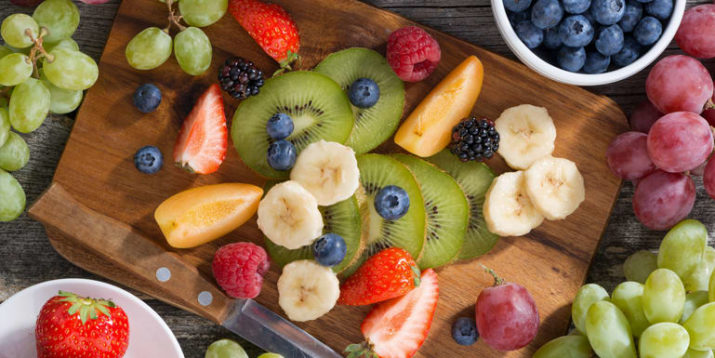5 Culinary Tips to Survive a Low FODMAP Diet

If you’ve tried the gluten-free trend and found that it didn’t solve your digestive issues, you may have half-heartedly sighed out of frustration. Maybe you felt secret glee that you could possibly eat those carbohydrate treats again. But, you were back to square one with your tummy troubles.
Then you discovered the low FODMAP (Fermentable Oligosaccharides, Disaccharides, Monosaccharides and Polyols) diet, which eliminates gluten incidentally, and a host of other foods until you discover the foods that affect you negatively.
As a result, you find that your belly bloat became a thing of the past. You have more energy, your stomach is flatter, your bathroom usage may be more regular, and you’re probably feeling great overall… but your taste buds basically hate you. And they want a sandwich.
Is it even possible to create tasty food without delicious flavors such as garlic and onions? How can you feel full and satiated with so many restricted foods? And, most important of all, what about dessert?! The following are some tips to help you thrive on a low FODMAP diet so that both your belly and your taste buds are happy.
But first, if you’re new to the FODMAP approach, here’s what those on a low FODMAP diet generally avoid (a full list of foods that are rich in FODMAPs or FODMAP-friendly can be found here).
Foods to Avoid on a Low FODMAP Diet
Fructans (polymers of fructose): wheat, rye, barley, onion, garlic, artichoke, sunchoke, asparagus, beets, dandelion leaves, leek, radicchio and other chicories, broccoli, Brussels sprouts, cabbage, cauliflower, and fennel
Galactans (polymers of galactose): beans and lentils
Polyols: peaches, nectarines, plums, prunes, apricots, cherries, apples, pears, avocados, blackberries, lychees, and watermelon, along with sweeteners like isomalt, maltitol, mannitol, sorbitol, and xylitol
How to Improve Your Low FODMAP Diet
1. Conduct Oil Experiments
The low FODMAP diet allows most oils, so don’t get stuck in an olive oil rut. Don’t get us wrong: We love extra-virgin olive oil. But, there are lots of nuanced flavors you can get from olive oil’s lesser-known cousins. If you’re cooking with high heat, try avocado oil for a neutral flavor, or almond oil for a nutty note. If you want to switch up your vinaigrette, sprinkle toasted sesame oil on top of mesclun for an Asian flair, or dress up a veggie-studded grain bowl with pesto made from walnut oil. Check out our Ultimate Guide to Cooking Oils for more suggestions.
2. Spruce up Dishes with Fresh Herbs
Herbs are a low FODMAP ingredient category that are underused. They have a huge array of health benefits, depending on which you choose, and can add a myriad of verdant, bright flavors to foods. Try broiling salmon on a bed of fresh dill; blending cilantro, lime, and a neutral oil (try grapeseed) for a tangy Mexican vegetable saute sauce, or mixing whole leaves of basil with your salad greens.
3. Be Saucy
There are many vegetables that aren’t on the FODMAP diet, so take advantage of these and turn them into sauce bases. Roast whole tomatoes with a little oil and dried oregano until they begin to blacken at the edges, then blend and strain for a smoky, sweet tomato sauce. Steam carrots and blend for a substitute for butter in a cheese sauce base, then melt in some low FODMAP cheese such as cheddar or goat — no roux needed!
4. Take Time for Tea
Cooking with teas is an interesting and unusual change from the norm. Many teas are allowed on the low FODMAP diet — such as green, white, peppermint, weak black, chai, and herbal — and all have their own unique health values. Poach whitefish in green tea, freeze hibiscus tea to create beautiful crimson popsicles, or steep allowed fruit (such as blueberries, grapes, raspberries, and oranges) in peppermint tea for a refreshing fruit salad.
5. Don’t Miss Dessert
Sure, you may not be able to enjoy a regular slice of cake or an ice cream cone, but that doesn’t mean you have to forego many people’s favorite part of dinner. Feeling like cheesecake and you’ve discovered that you don’t have any issues with lactose? Make a modified version sweetened with stevia that uses ricotta and cottage cheese in lieu of cream cheese. If you’re unsure about a possible sensitivity to lactose, try subbing lactose-free ricotta and cottage cheese.
Is dessert spelled j-e-l-l-o for you? Squeeze fresh lemons or limes and mix with water, stevia, and gelatin for a gelled treat that’s better than the boxed stuff. Craving something warm? Cut an orange in half, slice off the bottom, and broil it until caramelized on top for an ultra healthy dessert that you eat right out of the shell with a grapefruit spoon.
Life on a low FODMAP diet might not be exactly like it was before, but using these tools will help your culinary life have some pizzazz again. Looking good, feeling well, and eating scrumptious food — who could ask for more?
